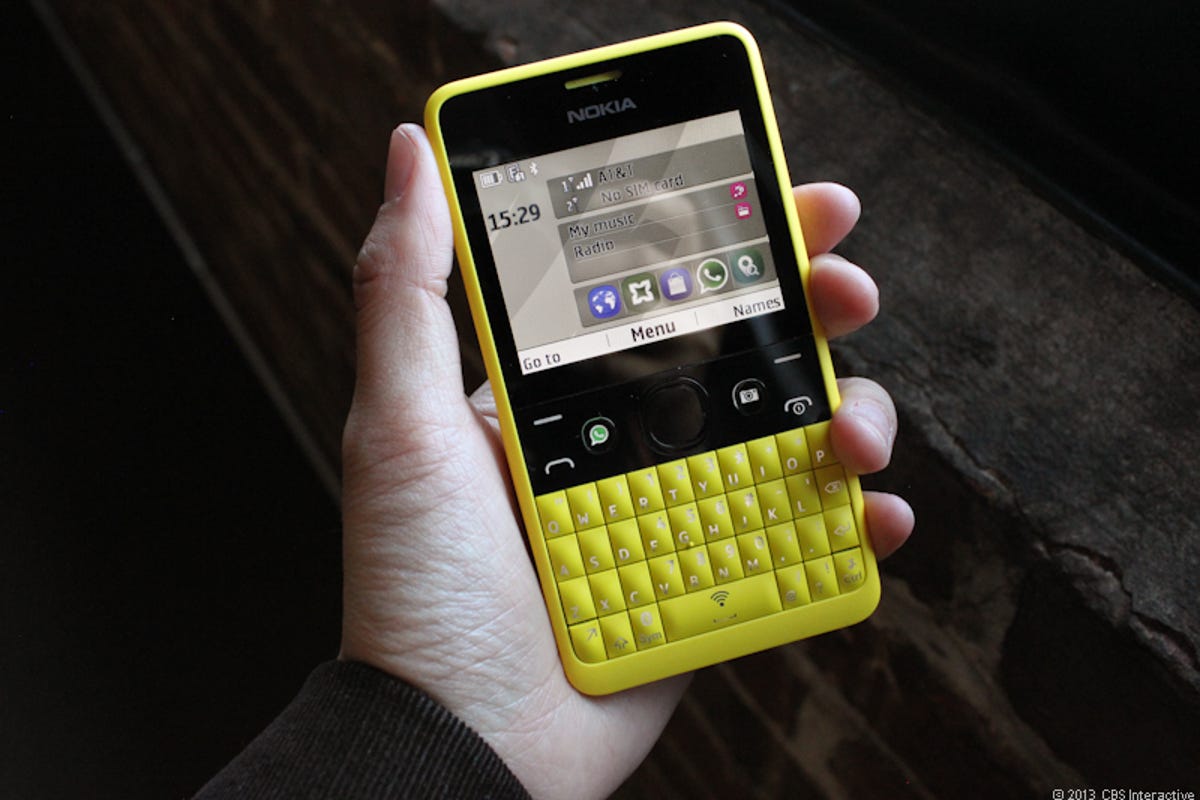
Nokia's compact Asha 210
Though it won't come to the U.S., the Asha 210 will hit Europe, Latin America, Africa, and Asia in Q2 with a $72 price tag. The budget-conscious phone will sport a 2-megapixel camera, a 2.4-inch screen, and an optional dual-SIM card slot. Aside from yellow, it will also come in four other colors: white, cyan, magenta, and black.
Great for texting enthusiasts
The four-row QWERTY keyboard lights up when in use and is textured for easy typing. In addition, the space bar doubles as a Wi-Fi launch button when long pressed. During my time with the device, I found the keyboard to be a bit cramped. However, save for a few typos and missed letters, the buttons are easy to press and again, I love the keyboard's chalky texture.
Launch messaging apps quickly
One of the center selling points of the Asha 210 that Nokia is pushing is its connectivity to certain social networking and messaging services. Depending on what version is available in your country, you can access either Facebook, Weibo, or WhatsApp (pictured above) with a physical shortcut key that's left of the center navigational button.
A look at the back
On the rear is a camera lens that lacks a flash. Below it is a wide speaker grill. With the help of a small indent up top, the back plate is easy to take off. Once removed, you can gain access to the primary SIM card slot, the microSD card slot that's expandable up to 32GB, and the battery.
Single- or dual-SIM modes
Save for the top of the phone (which houses a 3.5mm AV jack and Micro-USB port for charging), and a door on the left edge for the optional second SIM slot, its edges remain largely unblemished. It has a polycarbonate construction and a thin, severely bricklike shape. I especially welcome its smooth, almost chalky feel as well.
The bare necessities
The front includes a 2.4-inch QVGA screen, with a 320x240-pixel resolution. The device is powered by a 1,110mAh battery, which has a reported talk-time of 12 hours and a standby-time of 24 days. Other features include 64MB of flash memory and Bluetooth 2.1.

